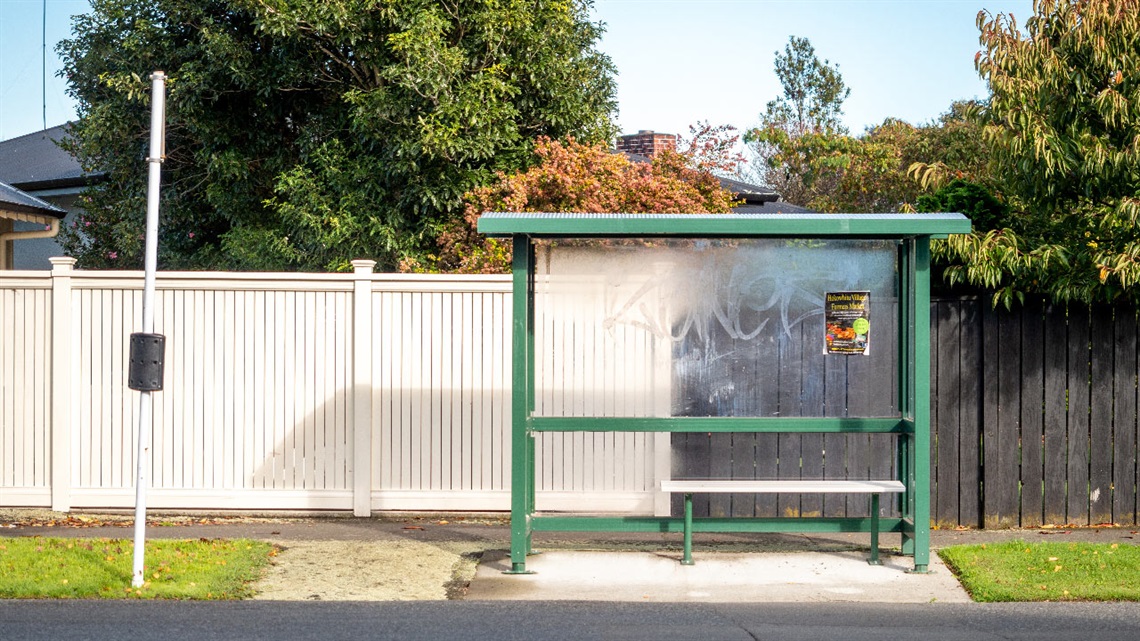Have your say on proposed new bus stops
Published on 30 August 2023

We’re keen to hear feedback from our community about proposed new bus stop locations for new bus routes that will come into effect in February.
Horizons Regional Council, which manages the operation of buses in Palmerston North, is changing the bus routes to allow there to be more buses more often – making it easier for people to choose to take public transport. This means in total there will be fewer bus stops, but in more prime locations. When the new routes start, an all-new electric fleet will also be in operation- meaning the buses will be quieter and better for the environment.
.Horizons Regional Council’s website has all the details of the new bus routes including what streets will now have stops, and the streets where stops are being removed because the bus won’t go past there anymore.
Our council owns the bus stops and shelters, as these sit on what we call the road reserve, or berms which council owns. For Horizons to start the new routes, we need to either remove, move or install new stops and shelters.
The work to upgrade our bus stops and shelters is 100% funded by Waka Kotahi NZ Transport Agency through its $348 million Transport Choices programme, which aims to demonstrate what’s possible for communities across New Zealand by quickly providing people with more transport options, making it easier to travel in ways that are good for all of us and our environment.
Our council will continue to manage the day-to-day maintenance of the shelters once they’re built.
Transport Manager Hamish Featonby says Council has worked with legal and bus operator requirements from Waka Kotahi and Horizons Regional Council to determine the proposed stop locations.
“This has included looking at the wider impact stops may have on the transport network , the ability for people to safely cross the road, what type of stop or shelter and other things (like signs, seats, bins etc) are needed at each location, what services or infrastructure needs to be at each stop/shelter and the distance between stops needing to be between 400-500m (based on the average walking pace this is around a 6-7 minute walk between stops).”
He says council staff have been to every single stop in the city to factor in localised considerations when choosing the stops.
They include:
- Not changing the location of a stop if there’s an existing one within 150 metres
- Whether there is a more suitable location for a stop – eg, close to a busy side road
- Avoiding or removing as few on-street carparking spots as possible
- Avoiding the removal of trees or vegetation
- Considering privacy: where possible we’ve looked to have the stop in areas where people have higher fences
- Location of key utilities or services underground – eg, water pipes, fibre, telecommunications, manholes for accessing water pipes
- Being close to key sites in an area – eg, other popular side streets, schools, shopping centres, hospitals and medical centres, pathways and major employment locations
- Local population size around the stop as well as how the city is proposed to grow in the future.
There will be a total of 350 stops in the city, half of which will remain where they are. The other half are changing due to the new routes or because we’re proposing to move them closer to a busy side street or place of interest.
The new locations are available on our website, which is also where people can give feedback. That feedback will be considered by Council’s project team and Horizons Regional Council and a summary of feedback and the response will be placed on our website later in the year.
Mr Featonby says the process for stops that have shelters is a little different.
“Between 80 to 100 stops will have shelters and under the Local Government Act we need to consult directly with the landowner and occupier. They’ll have an opportunity to provide feedback as part of a formal process which allows them to also speak to any concerns they may have. ”
He says there will be three different types of shelters with a range of different things in them (eg seats, leaners, real-time timetables) based on how busy that stop is. Landowners, occupiers and neighbours will be informed of the proposed shelter and amenities that are proposed for their location.
Mr Featonby says while the law has this special process in place for people with shelters in front of their properties, council believes it is fair to also seek general feedback on the location of stops that the project team can consider.
“We’ve taken into account a wide range of different criteria for each location, but at the end of the day the people that live on these streets have a lot of local knowledge that may mean there are better locations.”
Feedback period open for three weeks
This feedback period closes at 4pm on Sunday 17 September.
Palmerston North City Council does not determine the routes, nor have jurisdiction to change them. If people have feedback about the routes or questions, they need to get in contact with Horizons Regional Council. Any feedback collected about the routes will be shared with Horizons.